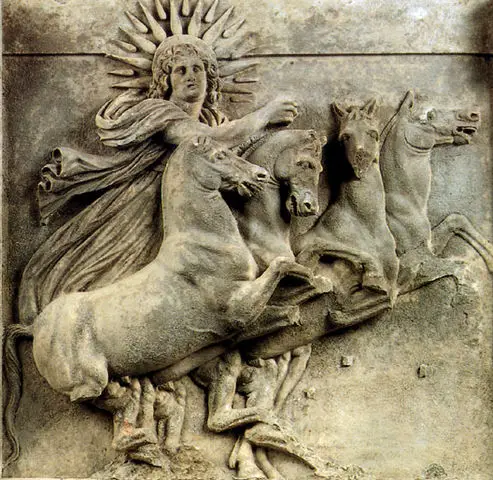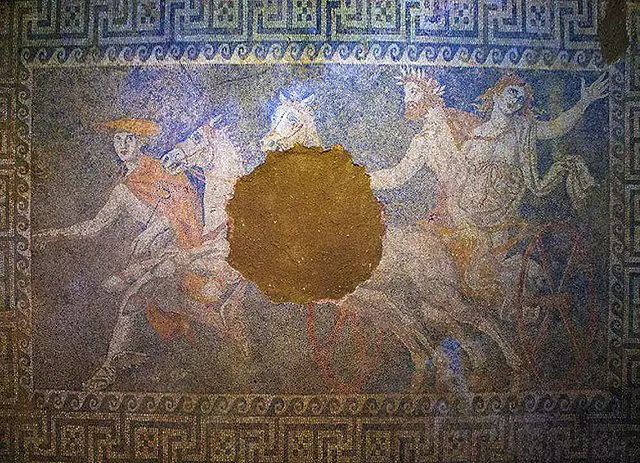| Further Reading | The 4 Most Important City-States Of Classical Greece |
When people think of the ancient Spartan warriors they think of men clad in bronze armor with red cloth draped around their bodies. This is mostly due to recent movies pushing the image of the Spartan warrior. However, the question remains did Spartans actually wear red cloth as part of their uniform?
It turns out that the Spartan’s did wear red cloth as part of their uniform. This cloth came in the form of a cloak and padded vest which would be worn under the Spartan’s bronze armor. We know about this from two major primary sources which come from the peak of Spartan power.
Here at The History Ace I strive to publish the best history articles on the internet. If at the end you enjoyed this article then consider subscribing to the free newsletter and sharing around the internet.
Without further ado, here is an article that answers the question of whether or not Spartan’s wore red cloth as part of their uniform.
Spartan Warriors Being Given A Red Cloak To Wear Over Their Armor
Our best source which describes the equipment of the average Spartan warrior comes from the legendary 5th century BC Athenian military historian Xenophon.
In his book Constitution of the Lacedaemonians Xenophon details exactly how the Spartan state ran during its peak. Within the pages of this book historians can begin to look at how the Spartan warrior was trained and why they were so ferocious in battle.
In the 11th chapter of the Constitution of the Lacedaemonians Xenophon details that each Spartan warrior would be given a brass shield and red cloak. This cloak would be worn during battle and would seek to terrify the enemy. The shield itself was made of brass and was supposed to be constantly polished by the Spartan.
This combination of a red cloth cloak and brass shield would be given to each soldier in the Spartan army. On top of this if the soldier had already had their first child then they were permitted to grow their hair out. This would give the soldier a taller, more dignified appearance within Spartan society. More importantly however Xanophon believed that the long hair, brass shield, and red cape would instill terror into the enemy phalanx.
Historians debate if the cloak would be used in battle. There have been reports that the red cloak was designed to hide wounds from both the enemy and more importantly the rest of the Phalanx. This might have been one of the main reasons why the Spartan warriors would be equipped with red cloth.
Other than hiding the wounds suffered from battle the cloak might have been a deterrent to running away. A Spartan turning their back to the enemy might allow for their cloak to be caught which prevented them from escaping.
However, we know that Spartans were given red cloaks of cloth to wear as part of their uniform. This cloth often took the form of a red cloak to be worn over the bronze armor.
5/4th Century BC Spartan Archeological Evidence For Spartan Red Capes And Cloth
Besides the written source of Xanphone we have archeological evidence for Spartan warriors wearing capes into combat.
The above image is of The Nereid Monument, a tomb for the 4th century Achaemenid Emperor Arbinas. This tomb was discovered on the southern side of Turkey near the island of Rhodes. On the side of this tomb are several friezes that depict the history of the warriors of Greece during the 5th and 4th centuries BC.
What is interesting about these inscriptions is that they depict Greek soldiers clad in cloth cloaks fighting against each other. From these images we can clearly see that Greek warriors fighting in a hoplite phalanx formation from the Laconian province are wearing capes.
These soldiers were more than likely Spartan in origin. The tomb of Arbinas was more than likely depicting the Peloponnesian war which dominated the Aegean sea during his lifetime. This war was fought between Athens and Sparta along with their allies for control over the Greek world.
Besides the Nereid Monument we also have the much older 5th century BC Harpy Tomb pictured above.
This tomb also is on the southern coast of Turkey near the Greek island of Rhodes. Many of the images of this tomb don’t survive, however the ones we have are fascinating.
Pictured above is an older man who is seated and holding a staff. This man looks to be of Greek descent and under him is an animal. The man is handing over a Greek Corinthian style helmet to a younger man who is holding a bronze shield and wearing armor with a cloth tunic under it.
There is a solid chance that this younger man depicts a young Spartan being given the equipment necessary to go to war. Unfortunately not much of the Harpy Tomb remains. Future analysis of the tomb might be able to tell us more about its builders and motives.
As such we have archeological evidence of Spartan’s wearing cloth as part of their armor. Chances are this cloth was red as other Greek city-states more than likely did not supply capes to their warriors. Athens for example only provided cloth to wear under the armor.
Did The Spartans Wear Any Other Color Besides Red?
So the Spartan’s wore red. However, did they only wear red cloth? The answer to this is no.
During the later Spartan kingdom of the 4th century BC Sparta would give its warriors a white cloth jacket to wear under their bronze armor. This white wool cloth was thick and designed to protect the Spartan from blunt force blows. Historians are unsure if Sparta was the first Greek city-state to provide this as we only have written sources which survive (outside of some extremely rare textiles).
Besides white and red was there any other color? We have one more color which only gets a passing mention as being a color of the elite in Spartan society. This was the color of purple.
Much like the Roman Emperor the elite of Spartan society would wear purple cloth to signify their importance. We know of this from Plutarch’s Life of Lycurgus where Plutarch makes a passing mention on how Lycurgus would prevent people from unjustly wearing the color purple. This was to prevent Sparta from falling into decadence and complacency like their northern Corinthian neighbors. (chapter 13)
It is important to remember that Plutarch is a biased source. However, it was possible for Sparta to obtain purple dyed cloth. However, we do not have reports of Spartan warriors wearing purple cloaks into battle. It would appear that everybody wore the same color.
Conclusion
There you have it; an entire article dedicated to the question of whether or not Spartan’s wore red cloth as part of their uniform.
The study of ancient Spartan society is fascinating. If you are a student of history I would look at applying some GIS methodologies to rebuilding the ancient city of Sparta. This will easily land you a job at a university while also working on something really cool.
Here at The History Ace I strive to publish the best history articles on the internet. If you enjoyed this article then consider subscribing to the free newsletter and sharing around the web.
Further, you can check out some of the other articles below.
-
How The American Revolution Changed The World

Here is how the American Revolution changed the world. Many people are not aware of just how important this event actually was.
-
Why The Roman People Loved Chariot Racing

Why did the Roman people love chariot racing? Well it all comes down to these 3 reasons.
-
The Design and Color of Roman Chariots

What was the design and color of Roman Chariots? Were they faster or slower then normal chariots? Well here is everything!
Sincerely,
Nick